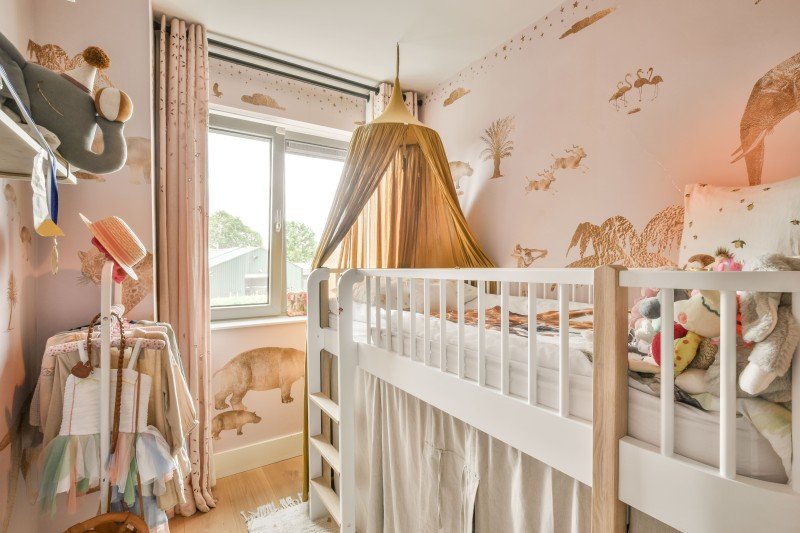Bunk Beds Sale: A Comprehensive Guide to Choosing the Right Bunk Bed for Your Home
Bunk beds have actually long been a staple in children's bed rooms, using a mix of space-saving performance and enjoyable. Whether accommodating siblings, good friends on slumber parties, or just taking full advantage of a playroom, bunk beds have ended up being an essential element in contemporary family homes. As sales on bunk beds increase, it ends up being progressively important for customers to make educated choices when purchasing one. Bunk Bed For Kids will cover the basics of purchasing a bunk bed, from types to security features, as well as ideas for preserving the integrity of your financial investment.
Types of Bunk Beds
When considering a bunk bed sale, it's essential to understand the different styles readily available on the market. Below are the most typical types:
- Traditional Bunk Beds: These consist of two beds stacked one above the other, sharing a single frame. They are often the most affordable choice.
- L-Shaped Bunk Beds: This design features one bed positioned vertically and another horizontally. This plan produces extra space underneath the upper bed, which can be used for storage or a backyard.
- Lofted Beds: Similar to traditional bunk beds however with no lower bed. Rather, the space below can be used for a desk, play location, or extra storage.
- Triple Bunk Beds: For families with a bigger variety of children or regular sleepovers, triple bunk beds supply three sleeping locations in a space-efficient style.
- Futon Bunk Beds: These designs combine bunk beds and futon sofas. The bottom area transforms into a different seating area, enhancing performance.
- Convertible Bunk Beds: These beds can be separated into 2 private beds, making them versatile as kids's requirements alter gradually.
Table 1: Comparison of Bunk Bed Types
| Type | Description | Space Efficiency | Extra Features |
|---|---|---|---|
| Conventional Bunk Bed | Two beds stacked vertically | High | Most basic design |
| L-Shaped Bunk Bed | One vertical and one horizontal bed | Moderate | Play or storage space |
| Lofted Bed | Elevated bed with open space below | High | Work/play area |
| Triple Bunk Bed | 3 stacked beds | Extremely High | Accommodates more users |
| Futon Bunk Bed | Bunk bed with a convertible futon | High | Multi-functional |
| Convertible Bunk Bed | Can be split into two different beds | Moderate | Versatility & & durability |
Safety Features to Consider
Safety is paramount when purchasing a bunk bed. Below are crucial safety features to search for:
- Guardrails: Adequate guardrails ought to be present on both sides of the upper bunk to prevent falls. They should be at least 5 inches greater than the bed mattress.
- Ladder Design: Look for strong, large ladders with slip-resistant rungs. Ensure that the angle is not too steep for easy gain access to.
- Stability: Ensure the bed is constructed with strong products, such as solid wood or sturdy metal. The bed must not wobble when in usage.
- Weight Limit: Check the weight capacity of the bunk bed to ensure it can accommodate the desired users safely.
- Material Safety: If possible, choose beds made from non-toxic products or those satisfying safety standards for kids's furnishings.
Table 2: Essential Safety Features
| Function | Description | Value |
|---|---|---|
| Guardrails | Sides of upper bed to avoid falls | Vital for child security |
| Ladder Design | Solid, slip-resistant rungs | Aids safe and simple gain access to |
| Stability | Build quality to prevent wobbling | Makes sure security and longevity |
| Weight Limit | Optimum weight capability | Prevents mishaps |
| Material Safety | Non-toxic, safe materials | Safeguards children's health |
Maintenance Tips for Bunk Beds
To extend the life of your bunk bed and ensure ongoing security, consider the following upkeep suggestions:
- Regular Inspections: Periodically inspect the structure for loose screws, bolts, or any signs of wear. Tighten fasteners as required.
- Clean Periodically: Dust and tidy the surfaces frequently. Use suitable cleaners that will not harm the surface.
- Check Weight Limits: Be conscious of weight limitations, particularly with older kids or adults who might wish to utilize the upper bunk.
- Prevent Climbing on Guardrails: Educate children not to utilize guardrails for climbing or playing to lower the threat of mishaps.
Frequently Asked Questions (FAQs)
Q1: What is the age limitation for kids to safely use bunk beds?A: While it varies by the maker, lots of suggest that children under 6 should not oversleep the upper bunk due to security concerns.
Q2: How can moms and dads dissuade hazardous climbing?A: Setting clear guidelines about bunk bed use and supervising children can help. Additionally, utilizing a bed tent can discourage climbing up while producing an enjoyable sleep environment.
Q3: What should I consider when decorating a space with bunk beds?A: Ensure there suffices space around the bunk bed for safe motion, and use the decor to produce individualized spaces for each kid.
Q4: Is a lofted bed suitable for older kids?A: Yes, lofted beds can be ideal for older children as long as they fulfill security requirements and the child is responsible enough to use them securely.
Bunk beds serve a functional purpose while including an element of fun to a child's bedroom. As sales of bunk beds continue to increase, mindful consideration of types, safety features, and upkeep practices is vital for parents and caretakers. By understanding these crucial elements, families can discover the perfect bunk bed for their home, guaranteeing both practicality and safety for many years to come. Whether it's for siblings sharing a room or creating a relaxing pajama party space, a well-chosen bunk bed can offer happiness and functionality, making it a worthy financial investment.

